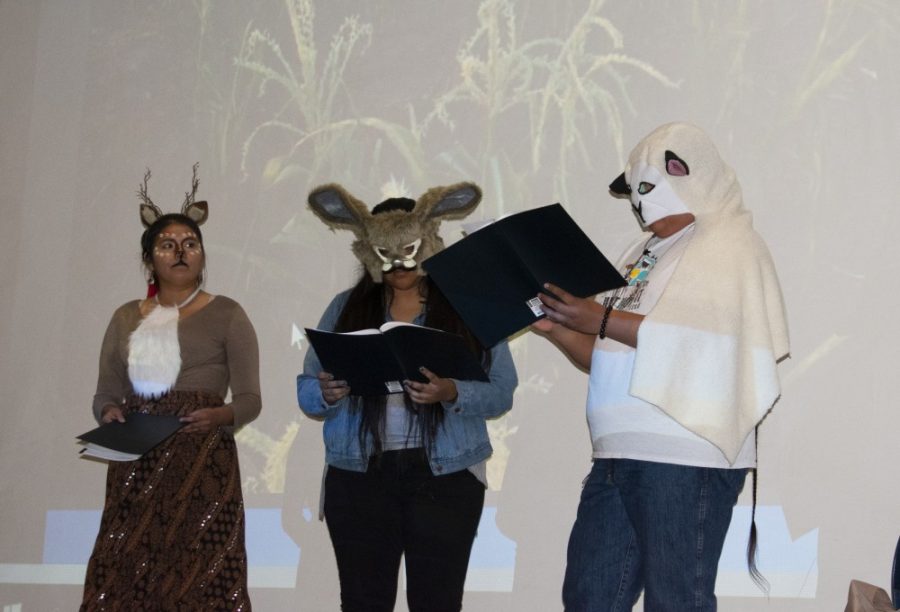Students from the Department of Linguistics and the Department of American Indian Studies wrote and directed a play, “Hai Dooleeł,” in the Diné language and showcased it Friday, Nov. 30, in the Social Sciences building. Aresta Tsosie-Paddock, an assistant professor in the department of American Indian Studies, helped students put together the play and narrated it. She said it was their first time doing a play in the Navajo language.
According to Tsosie-Paddock, the play started out as an assignment in the Intermediate Navajo Language class that had students write a dialogue, but everyone merged theirs together, edited it and turned it into a script.
RELATED: The Miss Native American Pageant returns to campus to crown next ambassador
The play, “Hai Dooleł,” which means “when winter comes,” is about a crow, a mountain lion and a coyote who come up with a plan to kill three unsuspecting animals. The play is told entirely in Navajo, and audience members are given a playbill with the script and the English translations so non-Navajo speakers can follow along.
Coyote stories, folk tales about animals and the misdeeds of the coyote figure, are an integral part of Navajo culture and meant to teach moral lessons to Navajo children, according to Tsosie-Paddock.
“Language and culture go hand-in-hand, because a lot of our ceremonies, prayers and creation stories are all told in the Navajo language, because each term has depth,” Tsosie-Paddock said.
“It’s really helped the students come a long way with their language,” Tsosie-Paddock said. “For example, Brittany [Cooper] is from Gila River. I’ve just seen her blossom, especially during this period of doing the play.”
Cooper is a psychology junior from the Akimel O’odham tribe. She said her stepmom and grandma speak O’odham fluently, inspiring her to learn Navajo.
“It was difficult to learn a whole new language,” Cooper said. “Just being able to do it out there in front of a lot of people gave me a lot of confidence to keep learning.”
The Diné language, the language of the Navajo Nation, is a difficult language to learn, with four different tones, different letters, nuances and complex meanings. Currently, Navajo is the most-spoken Native American language, but speakers are struggling to pass it on through generations.
RELATED: Modern football born out of the Carlisle Indian School
Thelma Scott, a sophomore in speech, language and hearing science, said, “the most important thing is to know who you are and what you came from and who you represent and to pass that on to other generations.”
In the 1900s, federally-funded boarding schools were established and many Natives were forbidden to speak Navajo, being forced to speak English instead to assimilate.
Millicent Pepion, a second-year PhD student in American Indian Studies who played a deer in the play, said her mom went to a boarding school where the Navajo language was taken away.
“It’s been really cool because I’ve been practicing my Navajo with my mom, so she’s remembering it,” Pepion said. “Also, I’ve been practicing with my daughter, so we are revitalizing it within our family.”
Tsosie-Paddock said that showcasing the language and culture was educational to bothstudents and audience members.
Follow Alana Minkler on Twitter









